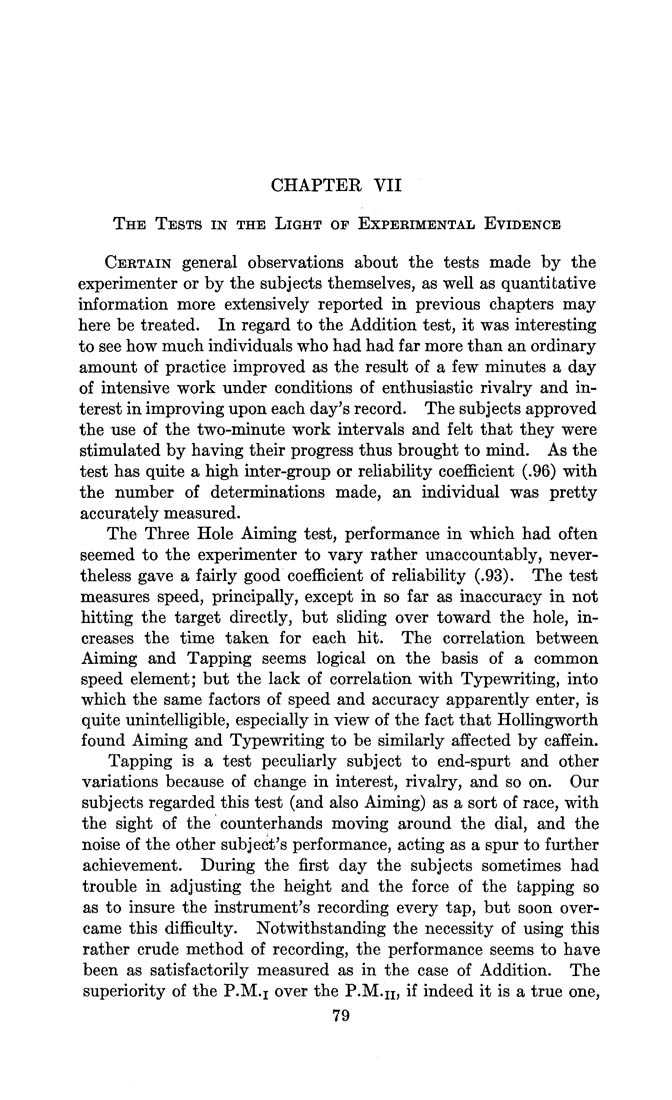CHAPTER VII
The Tests in the Light of Experimental Evidence
Certain general observations about the tests made by the
experimenter or by the subjects themselves, as well as quantitative
information more extensively reported in previous chapters may
here be treated. In regard to the Addition test, it was interesting
to see how much individuals who had had far more than an ordinary
amount of practice improved as the result of a few minutes a day
of intensive work under conditions of enthusiastic rivalry and in¬
terest in improving upon each day's record. The subjects approved
the use of the two-minute work intervals and felt that they were
stimulated by having their progress thus brought to mind. As the
test has quite a high inter-group or reliability coefficient (.96) with
the number of determinations made, an individual was pretty
accurately measured.
The Three Hole Aiming test, performance in which had often
seemed to the experimenter to vary rather unaccountably, never¬
theless gave a fairly good coefficient of reliability (.93). The test
measures speed, principally, except in so far as inaccuracy in not
hitting the target directly, but sliding over toward the hole, in¬
creases the time taken for each hit. The correlation between
Aiming and Tapping seems logical on the basis of a common
speed element; but the lack of correlation with Typewriting, into
which the same factors of speed and accuracy apparently enter, is
quite unintelligible, especially in view of the fact that Holhngworth
found Aiming and Typewriting to be similarly affected by caffein.
Tapping is a test peculiarly subject to end-spurt and other
variations because of change in interest, rivalry, and so on. Our
subjects regarded this test (and also Aiming) as a sort of race, with
the sight of the counterhands moving around the dial, and the
noise of the other subject's performance, acting as a spur to further
achievement. During the first day the subjects sometimes had
trouble in adjusting the height and the force of the tapping so
as to insure the instrument's recording every tap, but soon over¬
came this difficulty. Notwithstanding the necessity of using this
rather crude method of recording, the performance seems to have
been as satisfactorily measured as in the case of Addition. The
superiority of the P.M.i over the P.M.n, if indeed it is a true one,
79
|








